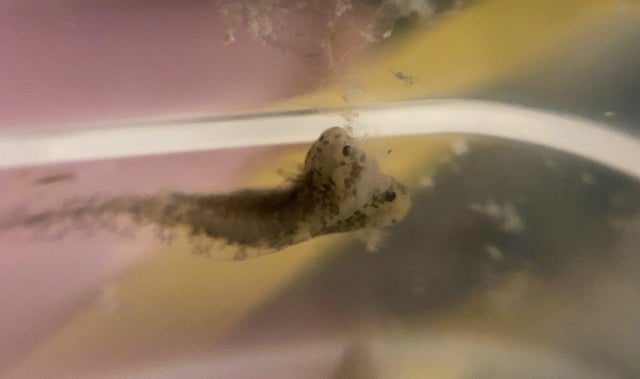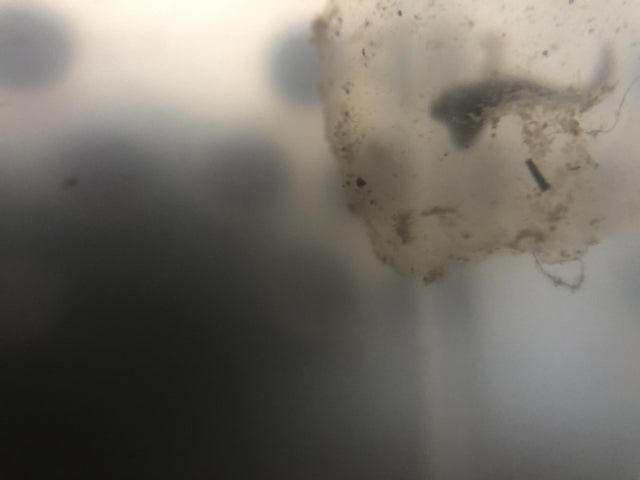
The 39-year-old's three sons were delighted when she settled for a pair of axolotls - smiley amphibians often known as Mexican walking fish.
But what they didn't expect to see was the salamanders, named Falkor and Toothless, spawn a baby with two heads.
Dubbed a thousands-to-one occurrence by an amphibian expert, Falkor gave birth to a deformed larva on Friday, January 17.
The axolotl died this afternoon but had been seen swimming and eating with one of its heads.
Louise thought its other might have been a 'parasitic twin'.
'He rolls into his back a lot when swimming but I guess this is a weight or balance thing, as he needs to get used to the extra head,' said Louise, a charity founder and full-time carer from Denmead.
'I actually noticed it had two heads about a week before it was born because axolotl eggs are transparent.
'I went and bought a camera attachment for my phone so I could see it more clearly and there it was, with two heads and one body.'
Louise had named the larva Orthrus after the Greek mythological dog of the same name, known for its two heads and serpent tail.
The creature intrigued axolotl owners and enthusiasts, with Facebook users tuning in as Louise posted updates twice daily.
After nine days of inspection Orthrus' death came as a blow to the family.
'I'm actually really sad as we were starting to believe he would make it and we were so willing him on,' Louise said.
'It's become a habit of checking on him throughout the day and from the moment we found the egg it's been exciting watching him grow.'
Matt Guille, a professor of developmental genetics at the University of Portsmouth, said the birth of two-headed tadpoles is 'relatively rare' - with one in between 5,000 and 10,000 born with two heads.
He said scientists carrying out experiments typically have to kill deformed tadpoles after seven days to comply with 'extremely high animal welfare standards'.
'We would have to humanely kill the tadpole because we don't know if these amphibians are suffering. We don't take the risk,' he added.




Reader Comments
to our Newsletter